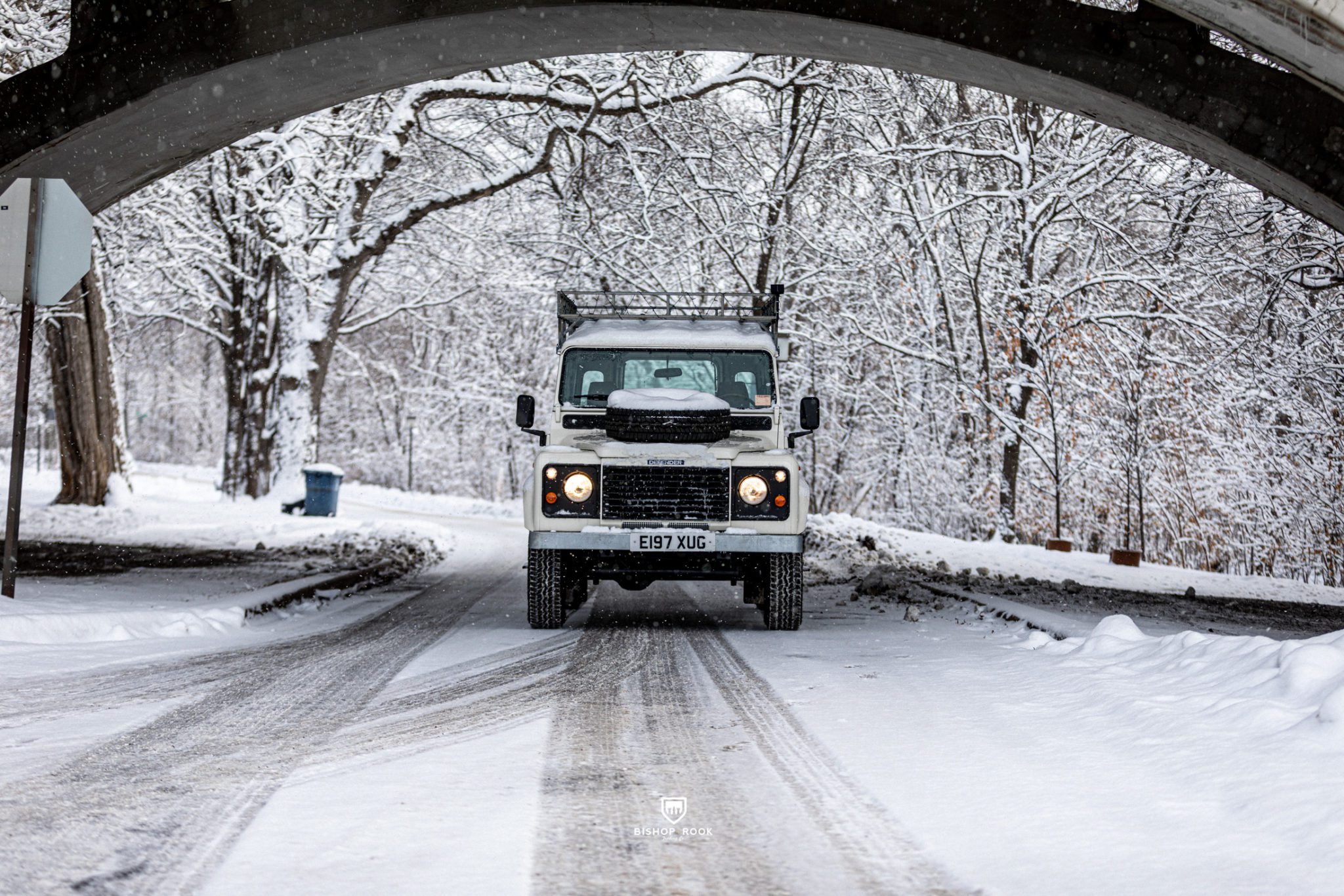We send each chassis off to be sandblasted, treated/sealed inside, and returned in black epoxy primer to seal the raw metal from any flash rusting. Once we get it back into the workshop we can start to see every single flaw that was covered by paint, mud, and “chassis protection” treatments over the years.
With a team of master welders, there’s not much we’re afraid of when it comes to restoring a Land Rover Defender chassis. Some aspects are more difficult than others, but it’s all fairly straightforward. Because we’re exclusively dedicated to restoring Land Rover Defenders, we have built several custom welding jigs to ensure everything is properly aligned as it was when it left the factory.
 Inspecting a Land Rover Defender 90 Chassis
Inspecting a Land Rover Defender 90 Chassis
There are a few areas on the chassis that almost always rust out, no matter how well it has been taken care of over the years. It’s simply part of the design – mud gets stuck in the hidden areas and creates moisture traps that create an environment for rust to thrive.

In the above photo, you can see some clear areas where the media blasting has cut through the chassis. This, to us, is a good thing. Well, at least a good way to make sure nothing is hidden. We would rather it be a perfect chassis, but since that’s not always possible, we’re always happy when the hidden damage is revealed. Before we send this off for blasting, there were no visible holes in the chassis rails. Once it’s exposed, it can be repaired.
The rear cross-member (bumper area for Americans) is generally the most common area that needs to be replaced. Fortunately, there are several after-market fabrication companies that provide pre-stamped and bent panels to help us with some of the difficult sections. Small holes and gaps can be cut out and replaced, but having complete sections not only saves time but ensures the best accuracy and durability with the final product.
We’ve seen a lot of folks try to hide this type of damage on a rear cross-member. Don’t be fooled by checker-plate protection or even bondo. If it’s not solid metal, it’s not going to support your vehicle.

The rear cross-member is easily replaced with a bit of skill and patience. Getting things lined up on the welding jig makes it a lot easier to support and ensure the chassis is aligned properly.

The metal on the overall chassis was in exceptional condition. It was mostly the outrigger and rear cross-member that had issues. Everything else was extremely solid and original – just the way we like it.
















































You must be logged in to post a comment.